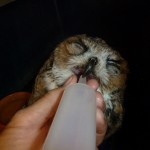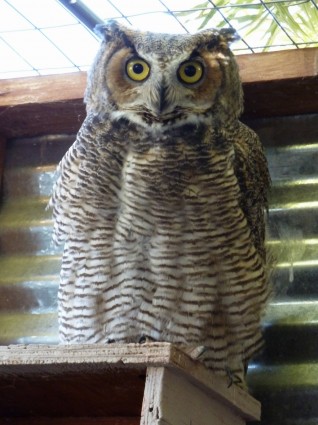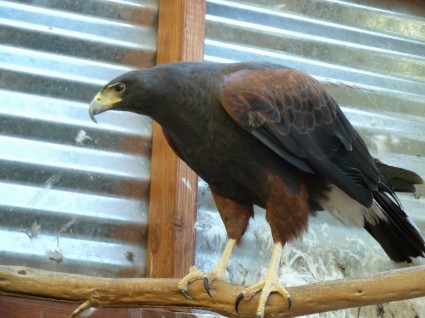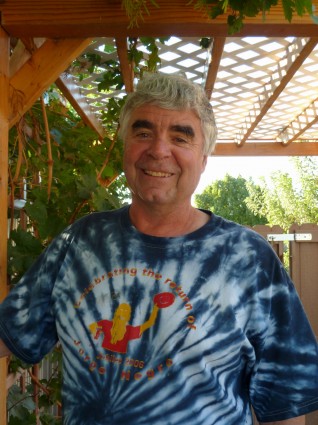Not long ago, a great horned owl was brought to Imperial National Wildlife Refuge’s visitor center suffering from what Refuge biologist Joe Barnett thought might have been a sting from a giant hairy scorpion. Today we visited with George Montopoli, the rehabilitator who took in and nursed the owl.
Dr. Montopoli is a professor of mathematics with Arizona Western College (AWC) in Yuma, Arizona. But he also holds seven rehabilitation permits to keep and work with birds of prey. Besides education permits on state and federal levels, he has state and federal permits in rehabilitation and falconry, as well as a state permit for humane treatment.
As we talked with Dr. Montopoli, we discovered he is a man of many interests. For many summers, he has traveled to Grand Teton National Park to work as a search and rescue ranger, as well as to perform studies on the black phase of the yellow bellied marmot. He holds a masters degree and a doctorate in statistics, both related to wildlife and population dynamics. He has also been researching mercury in the environment due to sudden deaths of 20 or so bald eagles in southwestern Montana in 2005. “As a result of the Bald eagle research,” he says, “I extended the research to human wildland fire fighters.” At present Dr. Montopoli is writing A Hiking Guide to Trails in the Yuma Area, still in draft form and constantly being updated.
Dr. Montopoli has done extensive research on bald eagles and other birds of prey. When biologist Joe Barnett left the injured great horned owl with him, Dr. Montopoli was able to rehydrate the bird and force feed it for several days. “It looked injured,” he said. “And I’m not sure it was just from the sting of a scorpion.”
One injury, according to Dr. Montopoli, appeared to be in the chest area. And while one eye of the owl that Joe Barnett left with Dr. Montopoli constricted and dilated normally, the other remained totally dilated. “The blindness,” says Dr. Montopoli, “is probably due to traumatic head injury — either from the scorpion or a vehicle. The owl does have a chance of regaining its sight and being released, but I wouldn’t bet on it.”
Blind owls make good education animals, according to Dr. Montopoli. After restoring the owl’s health by force feeding, he passed the bird to AWC’s biology professor, Cecilia Vigil, to allow her to attempt to get the owl to eat by itself.
We plan to check back with Dr. Montopoli and hopefully meet with Professor Vigil after next week to discover the fate of this great horned owl. If the owl does not eat on its own, it will have to be euthanized.
Injured Great Horned Owl below:
Dr. Montopoli’s healthy great horned owl below:
Dr. Montopoli’s Harris’s hawk below:




